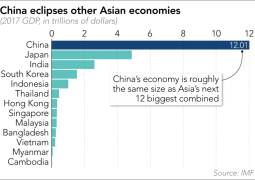AFGHANISTAN EXPECTS MILLIONS OF CORONAVIRUS CASES
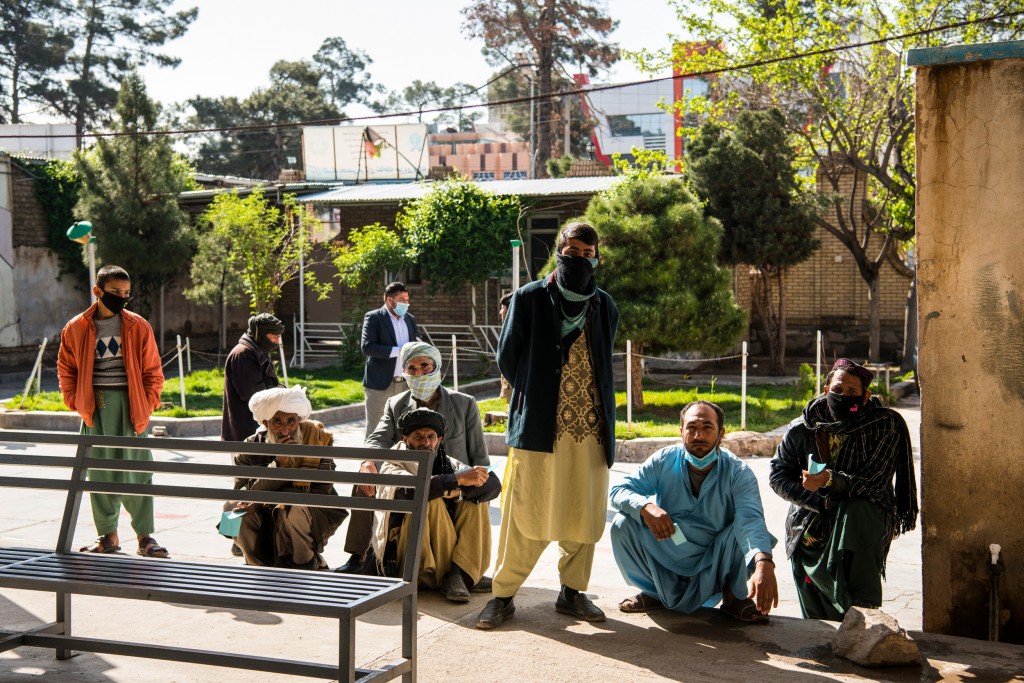
WITH FAKE HAND SANITIZER AND 12 VENTILATORS, AFGHANISTAN EXPECTS MILLIONS OF CORONAVIRUS CASES
AT A BUS INTERCHANGE on a highway outside the western Afghan city of Herat last week, minivans packed with migrant workers arrived from the Iranian border throughout the day. The passengers were among 140000 Afghans who had fled Iran’s deadly coronavirus outbreak and subsequent economic stagnation in March alone, part of what one international expert called the world’s largest cross-border migration since the pandemic began.
Most carried small suitcases filled with essentials: a blanket, a change of clothes, a sweater. Whether they knew it or not, some also carried the coronavirus.
The interchange was less a bus station than a muddy verge along the highway. Restaurants were open despite the city’s “measured lockdown” order, and their owners hawked traditional Afghan soup and piles of rice sweetened with raisins and shredded carrots. While the returnees waited to depart for their home provinces, a white ambulance raced back and forth along the highway, ferrying coronavirus patients to the only hospital with an isolation unit in all of western Afghanistan.
The ongoing fighting, widespread poverty, and weak public health system have been conspiring against sick Afghans since well before the emergence of Covid-19. But the inevitable spread of the pandemic in Afghanistan could be catastrophic, health professionals here say.

Left/Top: Men gather to rest after crossing the border from Iran into Afghanistan at Islam Qala in Herat, before taking a minibus to their home province of Faryab on March 25, 2020. Right/Bottom: At the Islam Qala border crossing, nurses screen for high temperatures as Afghans — many of whom are migrant workers — return from Iran.Photos: Andrew Quilty for The Intercept
In February, Afghanistan’s public health ministry designated the Afghan Japan Hospital in Kabul as the capital’s primary coronavirus treatment facility. But there was a problem: The hand sanitizer procured by the ministry and distributed throughout the hospital was tested and found to have zero alcohol content, two hospital staff members told The Intercept. The gel wouldn’t have rubbed ink off a white board, much less disinfected the hands of the hundreds of staff and patients. According to hospital staff, the sanitizer has since been disposed of and replaced by the World Health Organization. A WHO spokesperson acknowledged the existence of “inauthentic” sanitizer.
There is also a startling shortage of coronavirus tests and ventilators. WHO gave Afghanistan 1,500 testing kits, but only two laboratories in the country are equipped with machines that can process the test samples. The United Arab Emirates and China are donating tens of thousands of additional kits, said Dr. Wahid Majrooh, a senior adviser to the Afghan minister of public health. There are also plans to expand the number of diagnostic laboratories from two to 12.
Join Our Newsletter
Original reporting. Fearless journalism. Delivered to you.
As of April 2, the country’s two designated coronavirus hospitals had only 12 working ventilators between them. Four of those were at a hospital in Herat, but as of last week, none had been installed, Dr. Nasir Farhang, a newly graduated medical doctor working at the hospital, told The Intercept. “We don’t have any staff that know how to operate the ventilators or intubate [patients],” Farhang said.
The coronavirus pandemic couldn’t have hit Afghanistan at a worse time. The country’s top two candidates in the September 2019 presidential election have both claimed victory and held separate inauguration ceremonies. During a March 20 visit to Kabul, U.S. Secretary of State Mike Pompeo failed to broker a resolution between Ashraf Ghani, whose election victory was recognized by the U.S., and Dr. Abdullah Abdullah. Days later, Pompeo announced that the State Department was cutting $1 billion in aid to Afghanistan this year. The political impasse also threatens to undermine a February 29 agreement signed by U.S. and Taliban representatives in Qatar which many hoped would lead to the end of the 19-year war.
HERAT, A CITY of about half a million, is tied to Iran by trade, culture, and as the port through which hundreds of thousands of Afghans pass annually, mostly young men heading to Iran to find work. That relationship has put Herat, which now has nearly three quarters of the country’s 258 cases, at the center of Afghanistan’s coronavirus crisis. Experts say that number represents only a fraction of the actual figure for infections. A senior adviser to the Afghan Ministry of Health told The Intercept that based on patient data, 90 to 95 percent of Afghanistan’s positive cases are in people who have recently returned from Iran, where50000 cases have been recorded so far.
The International Organization for Migration estimates that around 2.4 million Afghans are in Iran at any given time. The border has been a well-worn path for unskilled workers for decades. In recent years, with unemployment at 30 percent in Afghanistan, the flow has quickened. According to IOM, roughly 1,000 Afghan migrants per day were using the countries’ two major border crossings with Iran — in Herat and Nimruz Provinces — to return home between January and March, when the number spiked.
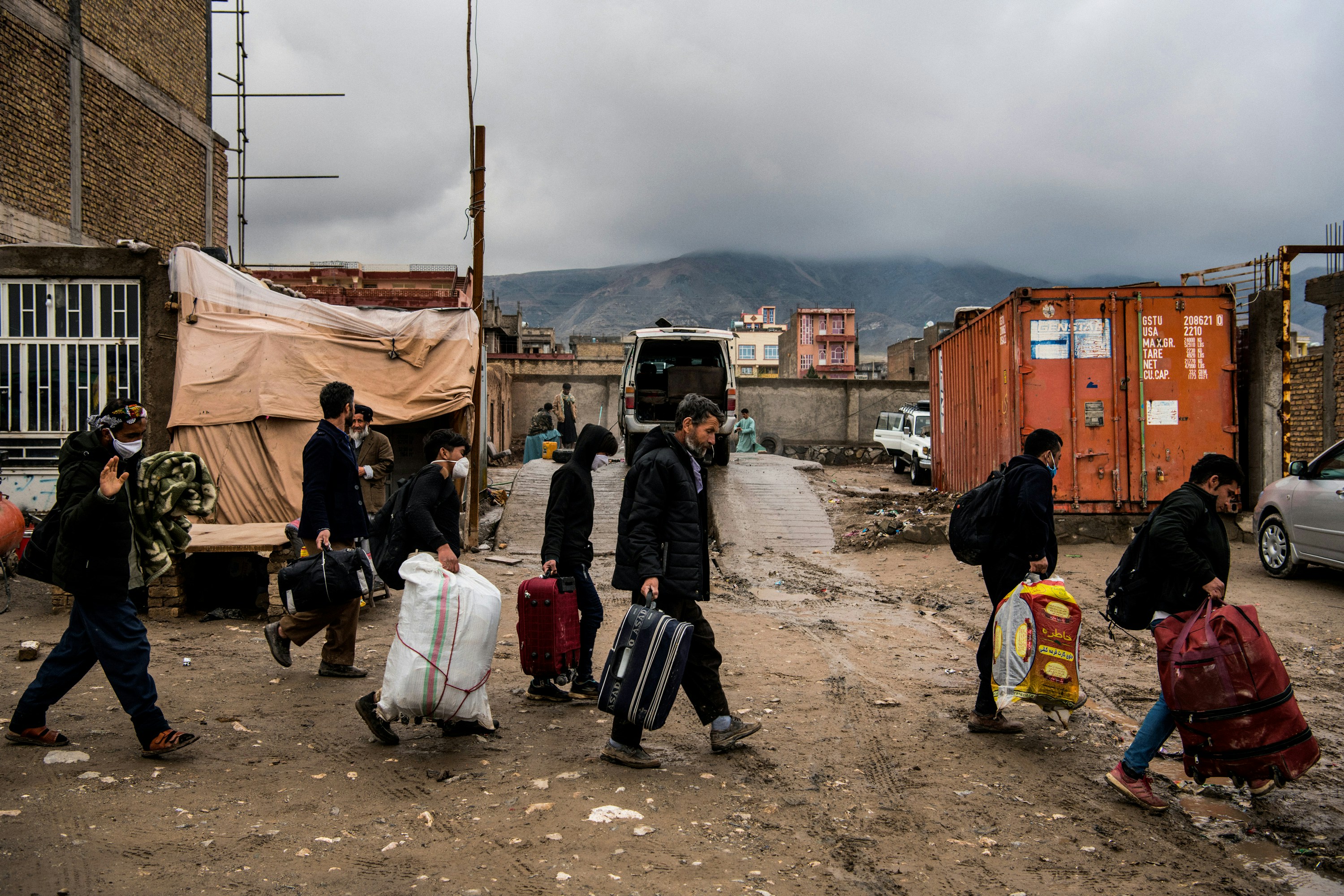
Photo: Andrew Quilty for The Intercept
One day last week, 31-year-old Zabihullah crossed into Afghanistan from Iran on foot after several months working as a laborer there. After a two-hour minibus ride to the outskirts of Herat, he wove his way on foot through muddy puddles to another van that would carry him on to his home province of Faryab, where his expectations of finding work were minimal. “There is no solution,” he said. “I’ll be lying down at home.”
In March, as thousands succumbed to the pandemic in Iran, worksites like Zabihullah’s closed down and more than 100,000 Afghan workers began returning home, knowing they’d never receive treatment in Iran if they became infected. As many as 15,000 crossed on some days in March, according to IOM. “It’s the only place in the world with such massive cross-border returns during Covid,” said Nick Bishop, who is heading IOM’s coronavirus response in Afghanistan.
Returns on such a scale would put tens of thousands of families under severe financial stress at the best of times. Now, the returnees also threaten to upend Afghanistan’s fragile health care system and thrust the country into chaos unlike anything it’s seen in the past two decades of war.
“Even before the global pandemic, humanitarian needs were immense due to decades of conflict [and] ongoing political instability,” Linda Tom, of the U.N. Office for the Coordination of Humanitarian Affairs in Afghanistan, told The Intercept. This year, she said, 9.4 million people — almost a quarter of Afghanistan’s population — are in need of humanitarian assistance.
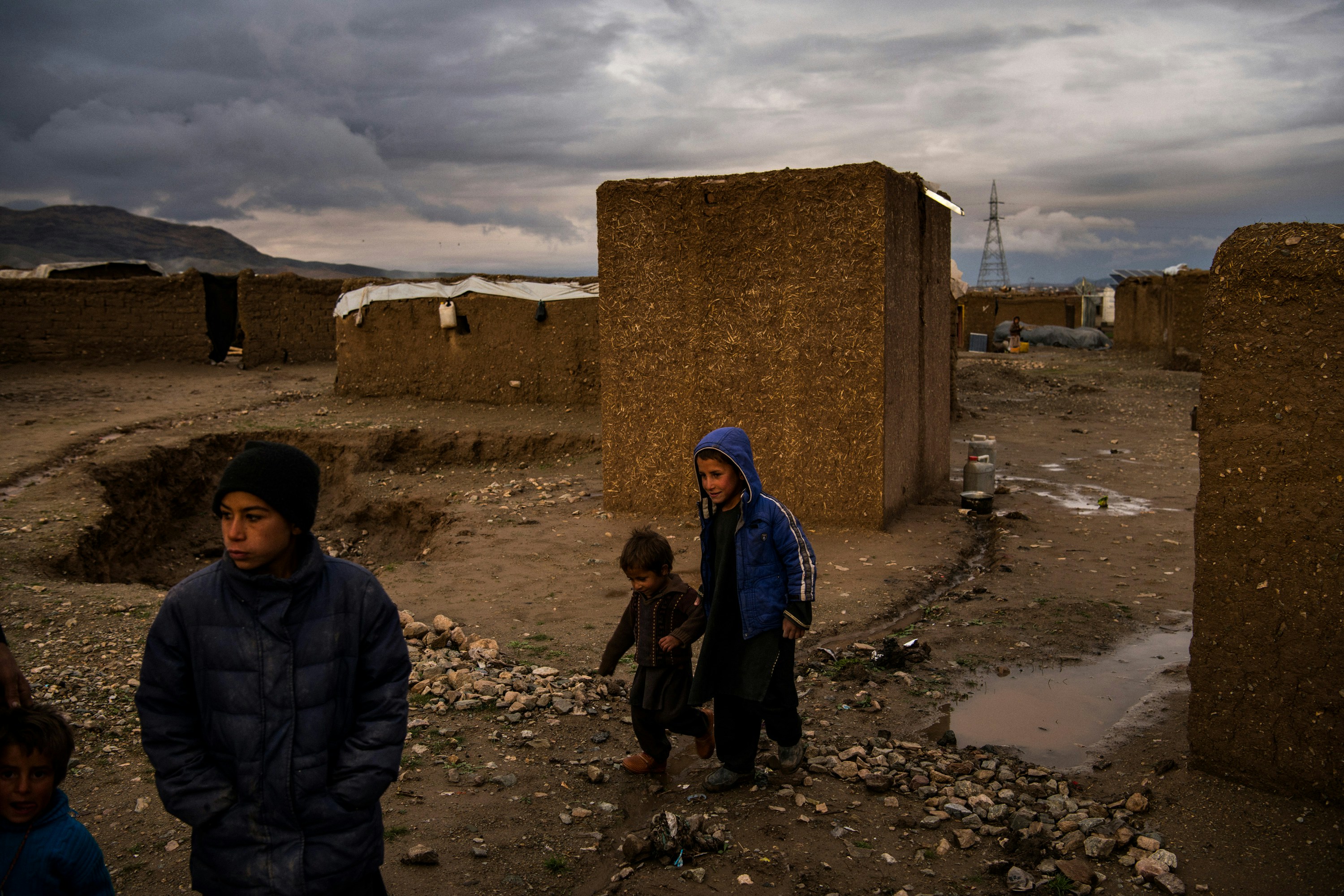
Photo: Andrew Quilty for The Intercept
AFGHANISTAN’S POROUS BORDERS make detecting and preventing the virus’s spread from neighboring countries virtually impossible. Fear and misinformation deter those with symptoms from seeking treatment, and Afghan homes typically host large, multigenerational families, making calls for social distancing unrealistic. At even greater risk are Afghanistan’s 4 million displaced people, who are too busy trying to survive poverty and upheaval to worry about a new virus.
The Shahrak-e-Sabz settlement on the outskirts of Herat is home to more than 10,000 families, most of whom built single-room mud-brick homes after fleeing fighting and drought in Badghis Province, to the north, in 2018. On a cold, wet afternoon last week, the virus was well down the list of residents’ priorities. After two days of rain, roofs were leaking or caving in, and solar-powered water pumps had stopped working under the cloudy skies. Previously, several residents said, they had relied on humanitarian agencies for help in situations like this. But those agencies are now overwhelmingly focused on the coronavirus.
Ghulam Sakhi, who runs a small store in the settlement, told The Intercept that nongovernmental organizations had come to the camp to inform them about the dangers of the pandemic. They “bring leaflets and say you must eat fruit for its Vitamin C,” he said outside his store, which is in a shipping container. “But we don’t even have bread.”

Left/Top: A shopkeeper closes up his store at dusk in the small bazaar inside the Shahrak-e Sabz IDP camp. Right/Bottom: Dawa Jan with his son Hazrat, 4 months, in their home at the Shahrak-e Sabz IDP camp, where they live with five other family members.Photos: Andrew Quilty for The Intercept
Above the gently sloping hill where thousands of mud-brick homes make up the settlement sits the 150-bed pediatric hospital that has been declared the region’s primary coronavirus treatment facility. Farhang, the recent graduate working at the hospital, told The Intercept last week that 56 Covid-19 patients out of what was at the time a countrywide total of 71 were being treated at the facility. A 45-year-old woman had died of the disease the night before, becoming the country’s second reported coronavirus death.
The lack of health workers trained to operate ventilators in Herat isn’t just the result of an overstretched system dealing with the coronavirus outbreak. In 2018, an international medical professional, who spoke on the condition of anonymity, discovered two brand-new ventilators in Herat Regional Hospital. Both were emblazoned with large WHO stickers; neither was being used. A surgeon had covered them in a sheet to keep them clean and secure.
“No one had been trained” on how to use them, the foreign health worker told The Intercept, noting that such lack of preparation was “typical.” And it wasn’t just ventilators. There were electric suction machines and cardiac monitors gathering dust because they were missing parts that weren’t available in Afghanistan, said the foreign health professional, who worked in the hospital at the time. “The crazy thing was I remember so many people dying because of the lack of ventilator beds in ICU.”
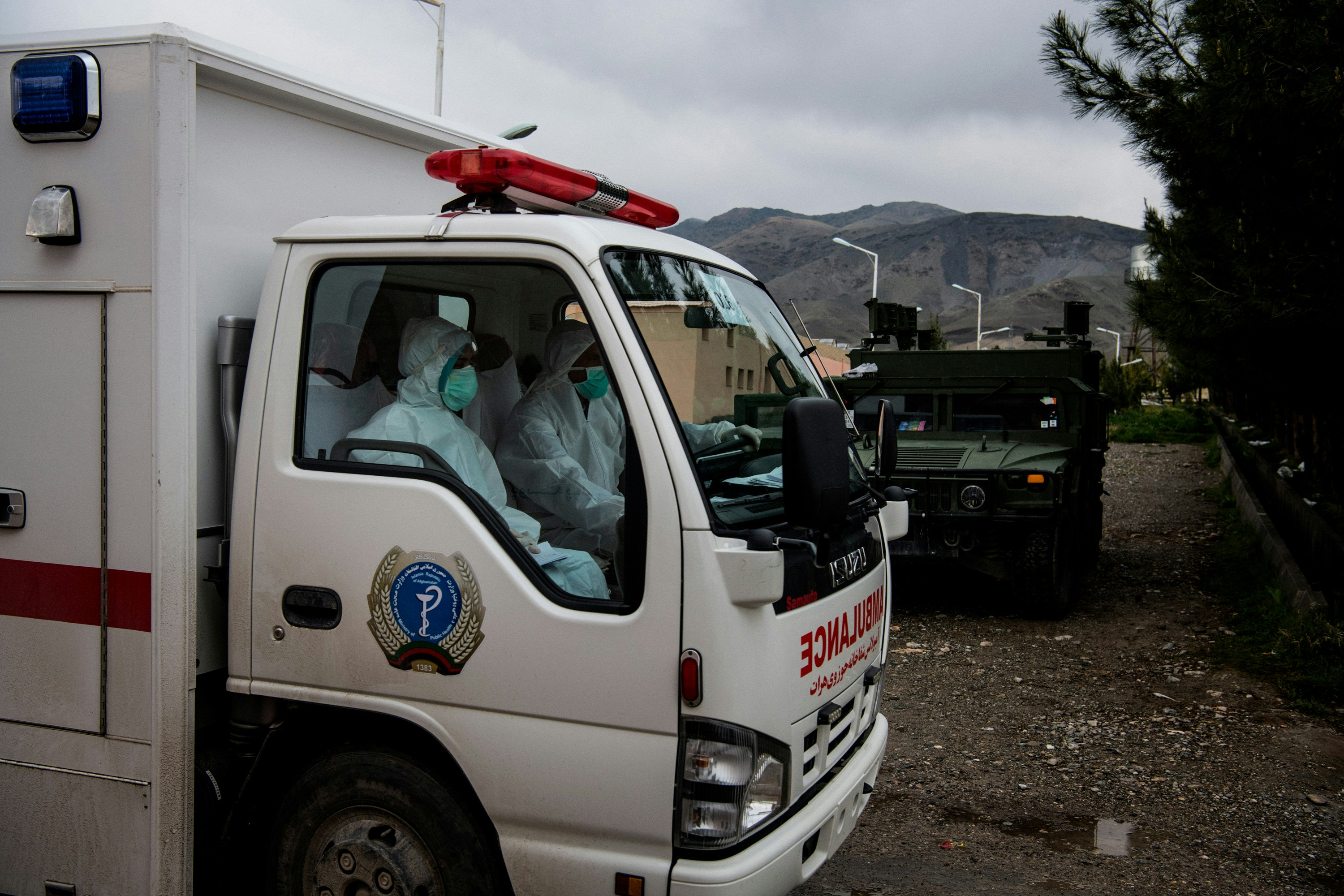 WHO informed Afghanistan’s Ministry of Public Health about the likely spread of the coronavirus in January. “When we received notification of cases in Qom, [Iran], we went to the zero point” at the border, Dr. Mohammad Asef Kabir, Herat’s deputy health minister, told The Intercept. Given the likelihood that the virus would cross into Herat with returning Afghans, the ministry’s initial efforts focused on detection and raising awareness about the need for good hygiene and social distancing.
WHO informed Afghanistan’s Ministry of Public Health about the likely spread of the coronavirus in January. “When we received notification of cases in Qom, [Iran], we went to the zero point” at the border, Dr. Mohammad Asef Kabir, Herat’s deputy health minister, told The Intercept. Given the likelihood that the virus would cross into Herat with returning Afghans, the ministry’s initial efforts focused on detection and raising awareness about the need for good hygiene and social distancing.
Such messaging, especially among vulnerable communities and those returning from Iran, is vital, IOM’s Nick Bishop said. “Based on socioeconomic status and levels of education, it’s going to be incredibly difficult to convey those messages in a meaningful way in the coming weeks when you’re really going to see exponential growth in the case count and, potentially, in the number of people dying.”
Photo: Andrew Quilty for The Intercept
THE AFGHAN GOVERNMENT, for its part, has been comparatively aggressive in instituting containment measures. On March 25, with just over 50 positive cases recorded in Herat, the province’s governor shuttered nonessential stores and businesses and banned public gatherings; the same restrictions were imposed in Kabul a few days later. Schools were ordered to remain closed after the winter holiday on March 14 in an initial effort to slow the spread of the virus. But streets in the two cities now resemble a regular weekend, showing how difficult it will be to enforce wholesale behavioral change in a country where much of the population lives hand-to-mouth and is resigned to the knowledge that each day may be their last.
As in China, Italy, Spain, and now the U.S., health facilities in Afghanistan are being converted into coronavirus treatment centers in anticipation of an onslaught of cases in the coming months. But the rollout has been plagued by staffing and equipment shortages which, if not resolved, will overwhelm the health system within weeks, according to local and international health professionals. An online advertisement posted by the public health ministry on March 29 listed 40 physician job vacancies. The Afghan Japan Hospital’s director, Dr. Atiqullah Kotay, said that staff will be required to work 24-hour shifts because of the transport disruptions wrought by the city’s partial lockdown. Still, he said it shouldn’t be hard to hire more health care workers. “In Afghanistan,” he said, “there are many medical professionals, but few jobs.”
Afghanistan Country Representative Julien Raickman told The Intercept. “It’s already a problem in normal times, but in the time of an epidemic, it will have a terrible impact.”

A woman waits for a consultation with a doctor in the intake area of Kabul’s Afghan Japan Hospital, which has been designated as the capital’s primary coronavirus treatment facility, on March 29, 2020.
Photo: Andrew Quilty for The Intercept
Some medical professionals and NGO workers have criticized WHO’s response. “Of course [WHO] always thinks that money is the answer,” a leading international health expert based in Kabul, who spoke on the condition of anonymity, told The Intercept. “You can [have] all the money you want, but in the end, what for?” More important, this person and others said, are human resources and supplies, which were becoming increasingly difficult to procure as air travel and borders shut down.
“We expected more,” Majrooh, the adviser to the minister of public health, told The Intercept.
WHO’s Amadullah Amarkhil said a massive amount of long-term support will be required. “WHO is closely working with [the Ministry of Public Health] and assisting the Health Sector and its Partners since early January regarding COVID-19 on preparedness and has massively expanded its assistance in key areas,” he said in an email.
Early one morning last week, a small queue of patients waited for a prediagnosis consultation in an outdoor area near the Herat Regional Hospital’s laboratory. The doctor, who wore a head-to-toe protective suit, was assisted by Mohammad Shafi Khotibi, a local nurse. On average, Khotibi explained, medical staff hold such consultations with about 100 patients daily, about 50 of whom are asked to give nose and throat swab samples for testing. The sampling kits are regularly replenished by the health ministry, but the process isn’t seamless. “Every time it runs out,” said Khotibi, “there is a gap of several hours.” (At the time of publication, according to the ministry, 1,807 tests had been performed nationwide.)

Left/Top: A patient is assessed for coronavirus symptoms in a consultation with a doctor, in white, and nurse Mohammad Shafi Khotibi, in green, outside Herat Regional Hospital’s laboratory. Right/Bottom: People line up for a consultation with a doctor outside Herat Regional Hospital’s laboratory, where samples from suspected coronavirus carriers are analyzed.Photos: Andrew Quilty for The Intercept
The relatively small number of available tests “gives no chance for health actors to understand the gravity of the situation,” Raickman said. Since humanitarian aid is directly linked to the number of proven cases, having such a low number of confirmed cases means the supply of resources won’t match the demand.
“It’s one of the biggest challenges we’ll ever see,” Raickman said. “When you see the support we’re receiving from Europe, it’s not the kind of support we received for Ebola in Congo because the people who are supposed to support you — they’re sick themselves.”
Dwain Hendriksen, who is leading the Covid-19 response for World Vision Afghanistan, concurred. “We’re still able to access a bit of donor funding,” he said, “but nothing like what we will need when the spike in Covid-19 cases increases over the next few weeks,” assuming better and more frequent testing begins to show the true scale of the problem.
On March 25, Afghan Minister of Public Health Ferozuddin Feroz announced that according to its estimates, 80 percent of Afghans — approximately 25 million people — may contract the coronavirus.
Raickman had just heard those figures when he spoke to The Intercept. In Italy, he said, “they have almost 10 percent mortality; it’s impossible to consider that Afghanistan will be less than this.” He sounded downcast. “So yeah, you just do the maths. It could be a really huge catastrophe.”
- Previous ‘Demographic flooding’: India introduces new Kashmir domicile law
- Next Turkish charity distributes COVID-19 aid in Rohingya camps





